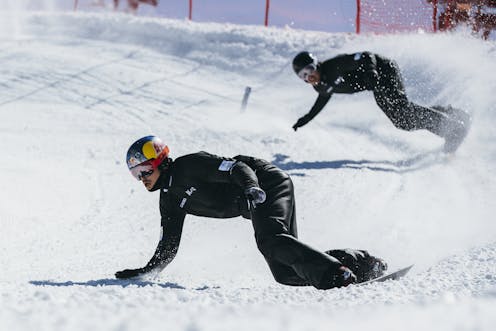Will a controversial sports funding strategy give Australia's Winter Olympians the winning edge?
- Written by Lisa Gowthorp, Assistant Professor of Sport Management, Bond Business School, Bond University

Australia will send 51 athletes to this month’s Winter Olympics in Pyeongchang to compete across 11 disciplines. Freestyle skiing and snowboarding are the most popular sports; 28 athletes will represent Australia in these disciplines.
National sporting organisations and individual athletes have applied for funding and support ahead of the Olympics under the controversial Winning Edge strategy. The strategy prioritises funding for sports that have the greatest chance of success or that can demonstrate a capability to deliver results.
According to Winning Edge targets, Australia’s team in Pyeongchang is expected to finish in the top 15 on the medal table.
How Winning Edge works
At the 2014 Sochi Olympics, Australia finished 24th on the medal table, with no gold medals. But at the 2010 Vancouver Games Australia finished 13th, winning two gold medals.
So, it is not out of reach for the Australian team to meet the Winning Edge targets. However, medal expectations lie with the sports funded by the strategy – namely skiing and snowboard.
In 2017, both the Australian Sports Commission (ASC) and the Australian Institute of Sport (AIS) had significant changes in leadership. As a result, the AIS announced it will no longer use the Winning Edge brand name. The new AIS director, Peter Conde, explained:
I don’t think it’s a brand that’s useful in the future.
For elite sport this is about national pride and inspiration through sporting success, and that comes from more than a medal count. We want a real focus on the value that athletes bring to the community.
While change is on the way, the athletes have prepared for PyeongChang under the Winning Edge principles. Winning Edge outlines investment principles that determine what sports – and athletes – will be funded and for how much. The bottom line is that sports must contribute to Winning Edge targets to receive long-term funding.
Winning Edge has categorised all Australian sports on their ability to contribute to the Winning Edge targets. Skiing and snowboarding are “foundation sports”, due to past medal success, and therefore receive funding under Winning Edge. No other winter sport qualified for funding under Winning Edge.
Unlike summer Olympic sports, which work closely with the AIS, skiing and snowboarding work with the Olympic Winter Institute. The institute receives funding from the Australian Olympic Committee (A$1 million per year from 2015 to 2018) and the ASC.
The Olympic Winter Institute’s Winter Sports Winning Edge guideline highlights the requirements of winter national sporting organisations or individual athletes hoping to receive financial support. Athletes must demonstrate a podium or top-eight finish at benchmark events if they are to be considered for funding.
So, for the smaller winter Olympic sports, performance is required before funding is received. But how can athletes improve their performance without funding or support?
Many athletes from the smaller winter sports (like bobsleigh, skeleton, luge and skating) source corporate funding and rely on the generosity of international teams to assist with coaching, training and accommodation while competing overseas. Many athletes in these smaller sports are self-funded in an attempt to make the Olympic team.
The Australian Olympic Committee does provide additional support to national sporting organisations and/or athletes who do not receive funding from the Australian Sports Commission. These contributions are up to $50,000 to sports such as biathlon, skating, bobsleigh, skeleton and luge.
The future beyond Winning Edge
The future, according to Conde, is what “value athletes bring to the community”. But what does this actually mean?
The Australian Sports Commission sought public engagement in the first half of 2017 to contribute towards the development of a National Sport Plan. The plan seeks to:
… understand Australia’s expectations of the sport sector, including our shared goals for high-performance sport.
But will Australians value winter sports and value the effort and dedication of those athletes competing at the Winter Olympics?
If an athlete’s role is to bring value to the community, surely the heroic efforts of our winter sport athletes bring inspiration, national pride and unity to many communities across Australia. Let’s hope all will be clear once the National Sport Plan – which includes the direction for high-performance sport – is released by the Australian Sports Commission later this year.
Authors: Lisa Gowthorp, Assistant Professor of Sport Management, Bond Business School, Bond University





